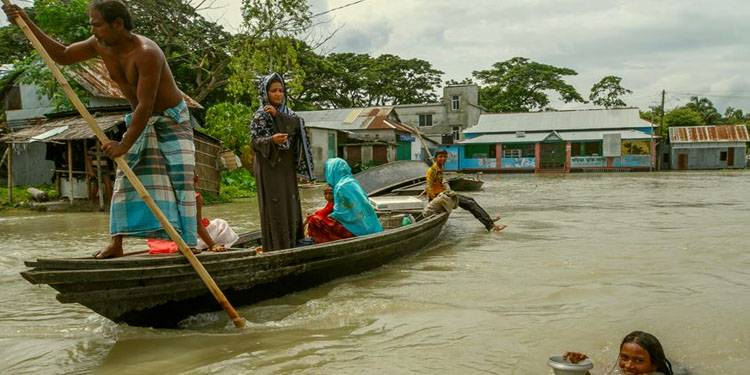
The death toll in southeast Bangladesh has increased to 48 as a result of the persistent monsoon rains and consequent flooding, with a number of people still listed as missing.
Authorities said on Friday that the floodwaters have really started to go down, giving the flood-devastated area some optimism.
Since Monday, the floods have badly affected at least 1.2 million people in four southeastern districts: Cox's Bazar, Chattogram, Bandarban, and Rangamati. They have left hundreds trapped and damaged countless houses. Tragically, two Rohingya refugees were among those who perished.
In a concerted effort to provide aid and support, ten military units have joined hands with the civil administration to conduct rescue and relief operations. The past four days have seen non-stop efforts to reach affected communities and deliver essential supplies.
Rakib Hasan, a senior official in Chattogram district, reported that while the waters are slowly receding, several areas remain marooned by floodwaters. He emphasized the ongoing necessity for potable water and sustenance for the affected populace. "We, with the assistance of army personnel and locals, continue the relief operation as people require potable water and food," Hasan said.
The district of Bandarban, nestled in the hills, witnessed 10 fatalities and around 15,000 residents grappling with the aftermath of the floods. The deluge managed to destroy 3,700 homes, leaving families without shelter.
As the country's largest man-made lake, Kaptai Lake in Rangamati district played a significant role in the flooding, causing water levels to surge. Even now, floodwaters persist in low-lying areas, exacerbating the crisis. The situation has led to the destruction of homes, crops, livestock, and fish ponds, leaving the locals in dire need.
With meteorologists predicting monsoon rains until August 15, the challenge for relief and rescue teams remains daunting.

